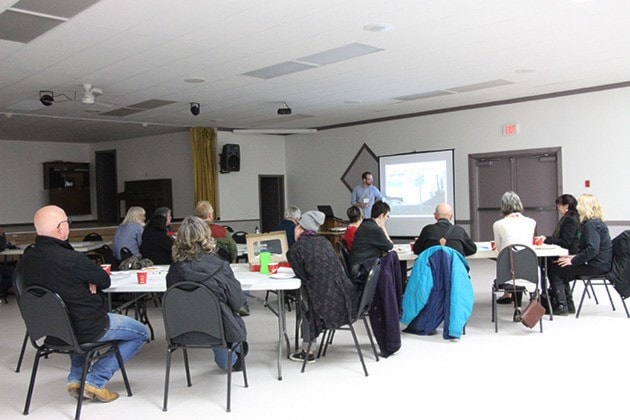Industrial and other human impact in northern B.C., as well as their implications, were on the forefront of discussion between academics, residents, and local government this month.
On Apr. 6, 20 community members, including participants from local organizations, government, and businesses, gathered at the Nechako Senior Friendship Centre for a discussion hosted by the University of Northern British Columbia on the impacts of resource development in the region.
Hosted by UNBC’s Cumulative Impacts Research Consortium, the event is part of an ongoing project to the integrate different objectives and needs of the communities in the midst of different disturbances of the landscape, and how to find balance, explained project lead Chris Buse.
The consortium was first launched last October and its focus stemmed from the growing lack of confidence in B.C.’s environmental assessment process for development projects, Buse said.
In 2011, B.C.’s auditor general released a report on the provincial environmental assessment office, stating that it is not adequately monitoring compliance by mines, power plants, and other projects.
“Today, tomorrow, and every other day, we take good care of us,” said Saik’uz First Nation elder Arlene John in the Carrier language as an opening address for the forum.
For an attendee involved in forestry work, in the past some companies may not know their impact, as they were using the best information they had at the time.
“Thirty years later we now see the impact,” he said. “We relied on government and environmental people to say if we had an impact.”
It is a balance between the number of jobs provided and the impact of development, he added.
“What happens if all this disappears,” he said.
For another, the scale of impact is also worth exploring.
“We are trying to broaden the scope, temporal and spatial, because impact could be multiple generations,” she said, adding that agriculture tends to be missed in resource development discussion.
For a Vanderhoof resident who lives five minutes from town, the proposed wind turbines on Nulki Hills may have effects on bird migration.
She also noted that for her, the negative connotations of resource extraction are highlighted in media, but cumulative human can be positive as well.
Potential solutions suggested by the audience included local groups and government given the opportunity to not only take part in decision-making for local resource extraction projects, but also receive a share of the profits.
Another possible solution suggested is to have opportunities that are flexible and can cater to the different needs and communities, while providing consistency in order for local organizations to be assured.
While many participants agreed on the importance of continuing dialogue and pulling knowledge from multiple industries and sources, such as traditional knowledge of the land, some are concerned about how a lay person can stay informed in the mass availability of data in today’s world, digest, and then engage properly.
